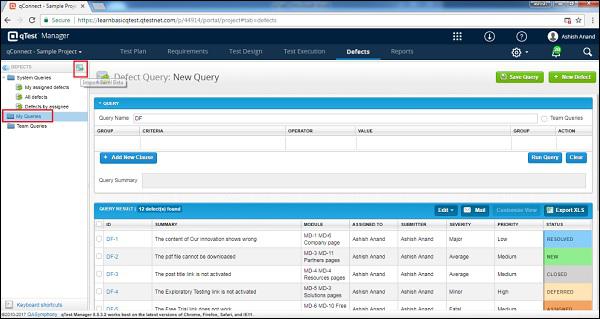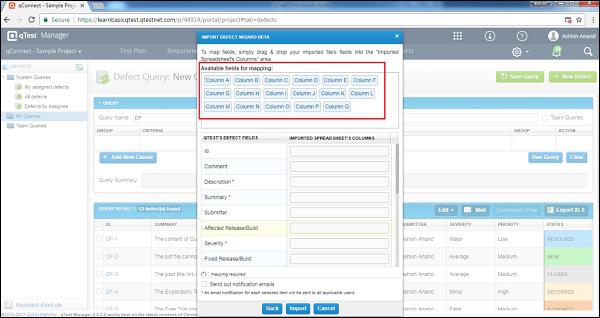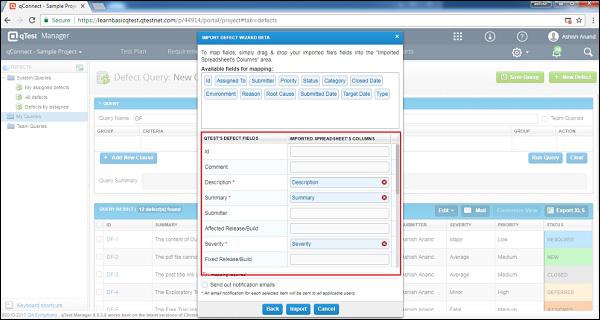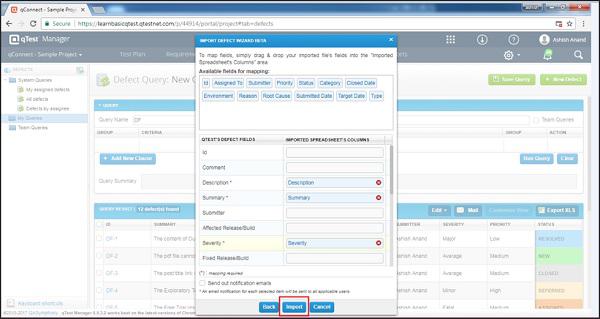qTest - Import a Defect
You can import a defect using the Excel spreadsheet. Excel files are text files represented by rows and columns as cells.
The following need to be considered while importing the data from Excel.
- Rules for Excel file
- Import the Excel file into the system
Rules for Excel File
Consider the following points while creating an Excel file −
The Excel file should have data in the first sheet only.
The sheet name should be Defects.
The first row should have the name of headers in different columns and next onwards; data should represent each column.
Note that the first row will be mapped with different fields of the Defect Creation Form while importing.
One column in Excel file can be mapped with only one field of the Defect Creation form.
The Defect ID field should not be mapped with any column. The system will automatically generate a Defect ID.
The required fields must be mapped with the column of Excel sheet and it shouldn’t be blank. Otherwise, the system will generate an error message of unsuccessful import.
The non-required fields can be left without mapping or data can be blank. While importing, either these fields will be blank or default values will be as defined in the project’s settings.
Import an Excel File
Let us now discuss how to import an Excel file. Following are the steps to perform the same.
Step 1 − Go to the Test Defect tab.
Step 2 − Select the Import Excel BETA icon from the toolbar just above the root folder. Following screenshot will help you understand this step.

Step 3 − On clicking the Import Excel icon, the Import Defect Wizard BETA opens up. It comes with a set of rules. Re-verify whether the Excel sheet fulfills those rules or not.
Step 4 − Browse the Excel file and upload. After successful upload, the filename displays in the Wizard as shown in the following screenshot. Check the "Use imported file's first row as header" box. qTest uses the first row of Excel file as the header. qTest will get the file's header as available fields for mapping.

The following screenshot shows the Available fields for mapping if the check box in the above step is selected and the Next button is clicked.

For instance, you do not select the option as in the above step, then qTest will get the column’s order as the available field mapping. Following screenshot displays the same.

Step 5 − Using the drag and drop functionality, map the Defects field with the Excel sheet column name present at the Available fields for mapping as shown in the following screenshot.

To delete a mapped field, click the X sign in the box. It will delete the field mapping and you can re-map the field with other columns, if required.
By checking the Send out Notification emails checkbox, an email will be sent about importing defects.
Step 6 − Now, click the Import button as shown in the following screenshot.

Upon successful import, you will get the imported information as shown in the following screenshot.

A dialog box with two buttons appears as in the above screenshot −
- OK − It will take you to the Defects tab.
- View Log − Using this, you will be able to see the imported logs.









